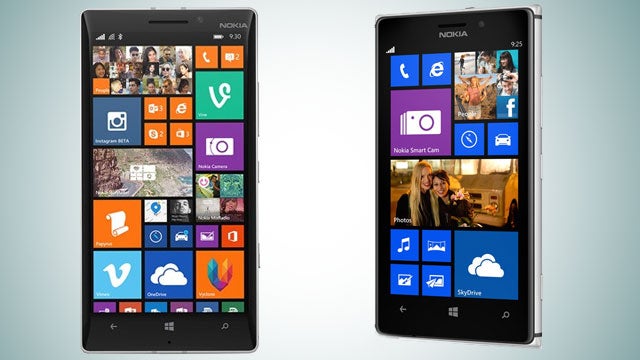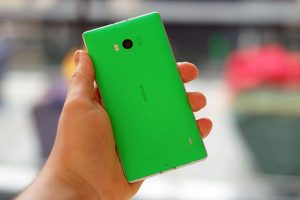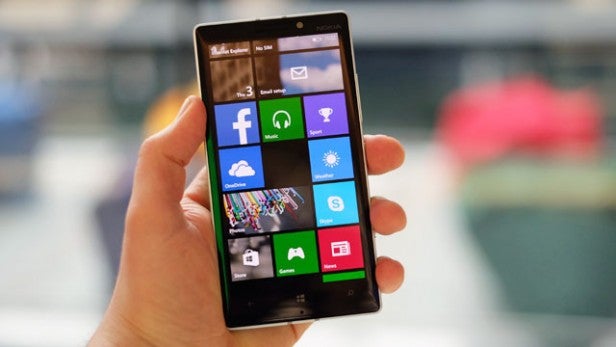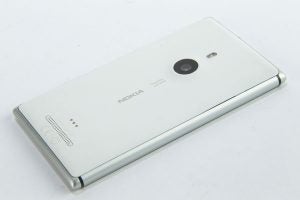Nokia Lumia 930 vs Lumia 925

Which is the best Lumia?
A little less than a year after the launch of the Nokia Lumia 925, Nokia has unveiled a new flagship smartphone, the Lumia 930. This could be one of the last ‘Nokia’ branded phones since the Microsoft buyout as we expect future phones to be branded as Microsoft phones, not Nokia ones.
The Lumia 930 will also be the first phone to launch with Windows Phone 8.1, which brings with it numerous improvements such as small icons, a proper notifications centre and the Cortana digital assistant.
But is the Nokia Lumia 930 really that much of a step up from the Nokia Lumia 925? Let’s take a closer look at what it offers.
SEE ALSO: Best Windows Phone Round-up
Nokia Lumia 930 vs Nokia Lumia 925 — Design
Nokia Lumia 930 – 9.8mm thick, Polycarbonate and aluminium,167g
Nokia Lumia 925 – 8.5mm thick, Aluminium and polycarbonate, 139g
In answer to our intro question, you could say that there’s a big difference between the Lumia 930 and the Lumia 925 – quite literally.
The Nokia Lumia 930 is almost a millimetre and a half thicker than the Nokia Lumia 925 (quite a lot in smartphone terms), and is almost 30 grams heavier.
Both phones are made up of aluminium and polycarbonate (posh plastic), but in different proportions. The Nokia Lumia 930 has metal sides, but they’re less obvious than those of the Lumia 925.
The design really is quite different. We actually think that the Nokia Lumia 925 is more attractive, and certainly more unique. The Nokia Lumia 930 can look rather like a bloated iPhone from certain angles, while the Lumia 925 is unmistakably of Finnish origin.
SEE ALSO: Siri vs Google Now vs Cortana: Which is best?
Nokia Lumia 930 vs Nokia Lumia 925 — Screen
Nokia Lumia 930 – 5-inch 1920 x 1080 AMOLED (441ppi)
Nokia Lumia 925 – 4.5-inch 1280 x 768 AMOLED (332ppi)
One of the reasons the Nokia Lumia 930 is bigger than the Nokia Lumia 925, of course, is because it has a larger display. Whereas the older phone employs a 4.5-inch screen, the new Nokia features a de rigueur 5-inch display.
Both phone displays use AMOLED panel technology, which means you get excellent contrast, deep blacks, and colours that truly pop. Nokia’s OLED displays tend to be better calibrated and more responsive than others, so you’re unlikely to have much of a complaint with either.
Despite being larger, the Nokia Lumia 930 doesn’t suffer for sharpness when compared to the more compact Nokia Lumia 925. In fact, the larger display is significantly sharper.
With a resolution of 1920 x 1080, the Nokia Lumia 930’s display produces 441 pixels per inch. The Nokia Lumia 925’s 1280 x 768 screen is only e 332ppi – a sizeable difference. It means that the vast majority of tasks, particularly when it comes to consuming media and browsing the web, will be better on the new phone.
Of course, whether you find the Nokia Lumia 930’s 5-inch display as easy to manipulate when it comes to the nitty gritty of calling and messaging on the go is another matter entirely.
SEE ALSO: Best Smartphones Round-up
Nokia Lumia 930 vs Nokia Lumia 925 — Camera
Nokia Lumia 930 – 20MP, 1/2.5-inch sensor, f/2.4, OIS, dual-LED flash,
Nokia Lumia 925 – 8.7MP, 1/3-inch sensor, f/2.0, OIS, dual-LED flash
Nokia puts more effort into its camera technology than any other smartphone maker, so it’s always one of the most interesting areas of comparison when a new model comes along.
The Nokia Lumia 930 seems to employ the same 20-megapixel PureView camera as was found in the Nokia Lumia 1520 when it launched towards the end of last year. Evidently this is the next generation on from the 8.7-megapixel camera tech debuted in the Nokia Lumia 920 and carried through (in enhanced form) to the Nokia Lumia 925.
It’s not just about megapixel count, which in both cases are used in a patented oversampling technique to produce cleaner 5-megapixel pictures anyway. The Nokia Lumia 930’s camera sports a larger 1/2.5-inch image sensor, which can pull in more light than the Nokia Lumia 925’s 1/3-inch sensor.
Conversely, the Nokia Lumia 925 sports a brighter f/2.0 aperture lens compared to the newer Nokia’s f/2.4 equivalent.
Both feature Nokia’s class-leading optical image stabilisation technology, which makes Nokia’s high-end phones pretty much the best around for taking low-light shots.
SEE ALSO: Best Android Phone Round-up
The Lumia 925 camera housing is much bigger than the Lumia 930’s
Nokia Lumia 930 vs Nokia Lumia 925 — Software
Nokia Lumia 930 – Windows Phone 8.1
Nokia Lumia 925 – Windows Phone 8
Having just been announced, Windows Phone 8.1 will soon be coming to all Windows Phone 8 devices as a free update, including the Nokia Lumia 925.
For now, though, the Nokia Lumia 930 is the only one with all the benefits of Microsoft’s latest mobile OS.
Those benefits include Cortana, a new voice-activated personal assistant that promises to combine the best bits of Siri and Google Now, and an all-new drop-down notification centre (at last).
Elsewhere you get small but notable tweaks like extensive Windows 8.1 syncing, a Swype-like keyboard input option, and a snazzy new home screen wallpaper effect.
It’s a clear win for the Nokia Lumia 930, then, but a short-lived one.
Nokia Lumia 930 vs Nokia Lumia 925 — Power/CPU
Nokia Lumia 930 – 2.2GHz quad-core Snapdragon 800 CPU, 2GB RAM
Nokia Lumia 925 – 1.5GHz dual-core Snapdragon S4 Plus CPU, 1GB RAM
The Nokia Lumia 925 was perhaps the last top-end Nokia phone to operate in the Windows Phone spec bubble, which saw successive devices lagging well behind their Android competitors (on paper at least).
Of course, Windows Phone is a very streamlined OS that didn’t need masses of power to run smoothly, but there was always the problem of perception. To the partially informed, it seemed as if Android was a much more advanced platform based on the raw power of its handsets.
The Nokia Lumia 930 operates in the same performance bracket as the Samsung Galaxy S5 and the HTC One M8, with comparable internal hardware. Which is to say that it’s a lot more powerful thank the Nokia Lumia 925.
The 930 runs on a newer Snapdragon CPU (the 800 as opposed to the 925’s S4 Plus) with double the number of cores (four), which have been clocked 700MHz faster. The Nokia Lumia 930 also has double the RAM of the Lumia 925 at 2GB.
With Windows Phone 8.1 supporting Qualcomm’s latest entry-level processors, it’s arguable that this is spec overload. But we all like a little extra juice in the tank, right?
Nokia Lumia 930 vs Nokia Lumia 925 —Battery
Nokia Lumia 930 – 2,420mAh, 432 hours stand-by, 15hrs 30min 3G talk time
Nokia Lumia 925 – 2,000mAh, 440 hours stand-by, 12hrs 40min 3G talk time
Here’s another reason the Nokia Lumia 930 is so much bulkier than the Nokia Lumia 925 – its battery is 20 per cent bigger.
That’s necessary, of course, because of the aforementioned spec hike. The larger and sharper the smartphone display, the more power is required to run it, and the same principle applies to the Nokia Lumia 930’s punchy Snapdragon 800 processor.
Despite the increase in battery size, Nokia’s estimated stand-by times for the two phones suggest that the Nokia Lumia 925 has a little more stamina in this regard. The talk time figures, however, show a major swing in the other direction, with the more powerful phone lasting an estimated three hours longer.
We found battery life in the Nokia Lumia 925 to be fairly unremarkable in our review, but it will be interesting to see what effect Windows Phone 8.1 has with its various optimisations, new power-sapping features, and improved Battery Power Sense monitoring tool.
Next, read our Lumia 930 preview


